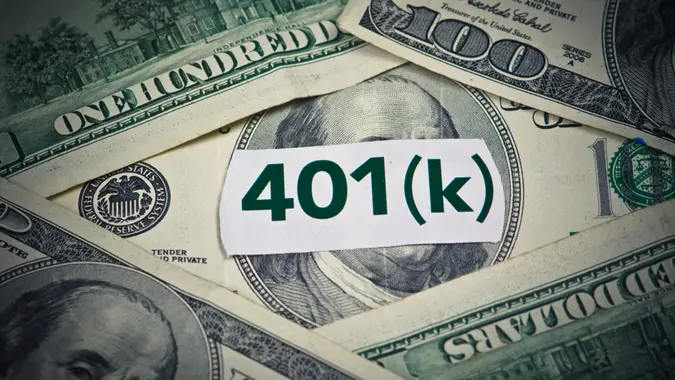Here’s How Much the Average Retiree in Europe Needs in Savings in 2024

Commitment to Our Readers
GOBankingRates' editorial team is committed to bringing you unbiased reviews and information. We use data-driven methodologies to evaluate financial products and services - our reviews and ratings are not influenced by advertisers. You can read more about our editorial guidelines and our products and services review methodology.

20 Years
Helping You Live Richer

Reviewed
by Experts

Trusted by
Millions of Readers
Many retirees dream of setting up their golden years overseas, in a European country, for both the cultural experiences it can bring and the potentially cheaper cost of living, depending on where you settle.
To do so requires “meticulous financial planning due to variations in the cost of living, healthcare systems and other factors across different European countries,” according to David Reyes, a financial planner and founder of Reyes Financial Architecture.
Read on to find out how to calculate the amount you need to have saved if you want to retire in Europe in 2024.
Healthcare
Healthcare needs to be at the top of your list when calculating expenses, because this is the stage of life where you’re most likely to experience a greater need for medical care and may have to purchase private health insurance.
Reyes said it’s crucial to research the healthcare costs of the specific country you plan to retire in. “Healthcare expenses can vary significantly across European nations. Some countries boast universal healthcare systems, while others may require retirees to purchase private health insurance.”
He recommended, “Allocate a substantial portion of your savings to cover healthcare expenses, especially if you anticipate requiring long-term care or specialized medical treatment.”
He said healthcare costs can range from approximately $3,000 to $10,000 annually.
Housing
Housing will probably be your next big expense, Reyes said.
“The cost of housing can fluctuate widely based on the location within Europe,” he said. “Major cities typically entail higher housing costs, whereas rural areas may offer more affordable options.”
And keep in mind that tourist-heavy areas will have the highest housing costs.
You’ll want to determine whether you intend to rent or buy property, Reyes recommended. “Renting provides flexibility, while purchasing offers long-term stability but requires a significant upfront investment.”
Then, be sure to factor things like property taxes, maintenance costs, utilities and other housing-related expenses into your retirement budget.
Reyes gave some examples of estimated monthly expenses to rent a one-bedroom apartment in and outside of a city center, plus utilities costs:
- Estimated monthly rent (for a one-bedroom apartment in a city center): $800 to $2,000
- Estimated monthly rent (for a one-bedroom apartment outside the city center): $600 to $1,500
- Estimated monthly utilities (electricity, heating, cooling, water, garbage): $100 to $300
Basic Expenses
Next, you need to research and calculate your basic living expenses, such as food, transportation, utilities and other essentials, Reyes said. “Take into account currency exchange rates and potential fluctuations, as they can impact your purchasing power and overall expenses.”
He suggested your estimated monthly living expenses can cost you between $2,500 and $5,000 per month.
Leisure and Entertainment
Retirement should be enjoyable, Reyes said, so you should budget for leisure activities, travel, dining out and entertainment — but within reason.
“Consider your hobbies and interests when planning your leisure budget, but exercise caution against overspending,” he said. “Seek ways to relish your retirement without exceeding your budget.”
He estimates a monthly budget of between $500 and $1,000 for these activities.
Tips for Prioritizing Savings
If you plan to retire in Europe in 2024, you’ve probably already got a good savings plan in action. However, it’s still important to work on your financial management, Reyes urged. “Prioritize retirement savings over other expenditures to ensure you have sufficient funds to maintain your desired lifestyle post-retirement.”
Keep your investments diverse to mitigate risk and enhance returns, and consult with a financial advisor to make sure your goals are in reach, he said.
$500,000 to $1 Million
While the specific amount needed to retire in Europe will vary, according to Loretta Kilday, a spokesperson for Debt Consolidation Care, you should aim for no less than $500,000 to$1 million to fund a comfortable retirement in most parts of Europe.
“More expensive countries, like Switzerland or Scandinavian nations, may require closer to $1 million plus, whereas Portugal, Spain or Central and Eastern Europe may be doable with $500,000 to $750,000,” she explained.
Emergency Fund
In addition to the expenses Reyes mentioned, Kilday added, “Maintain an emergency fund of six to 12 months of total living expenses in case of unexpected medical bills, family needs, etc. Keep this very liquid and accessible.”
Visa and Taxes
Be sure to also research the Visa process and tax implications thoroughly for your intended country, Kilday said. “Most European nations offer retirement Visa pathways, but the requirements and costs vary. You may still owe some U.S. taxes on certain retirement account withdrawals.”
In general, Kilday said, the top priority should be ensuring you have a large enough nest egg to cover all your basic needs, healthcare, housing and a decent cushion comfortably for at least 25 to 30 years.
“Beyond that, having ample liquid savings for emergencies and unexpected costs is key. Discretionary funds for travel and leisure are great to have but secondary to the essentials,” she said.
 Written by
Written by  Edited by
Edited by 

























